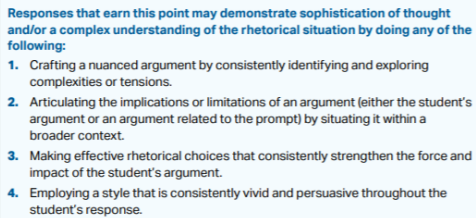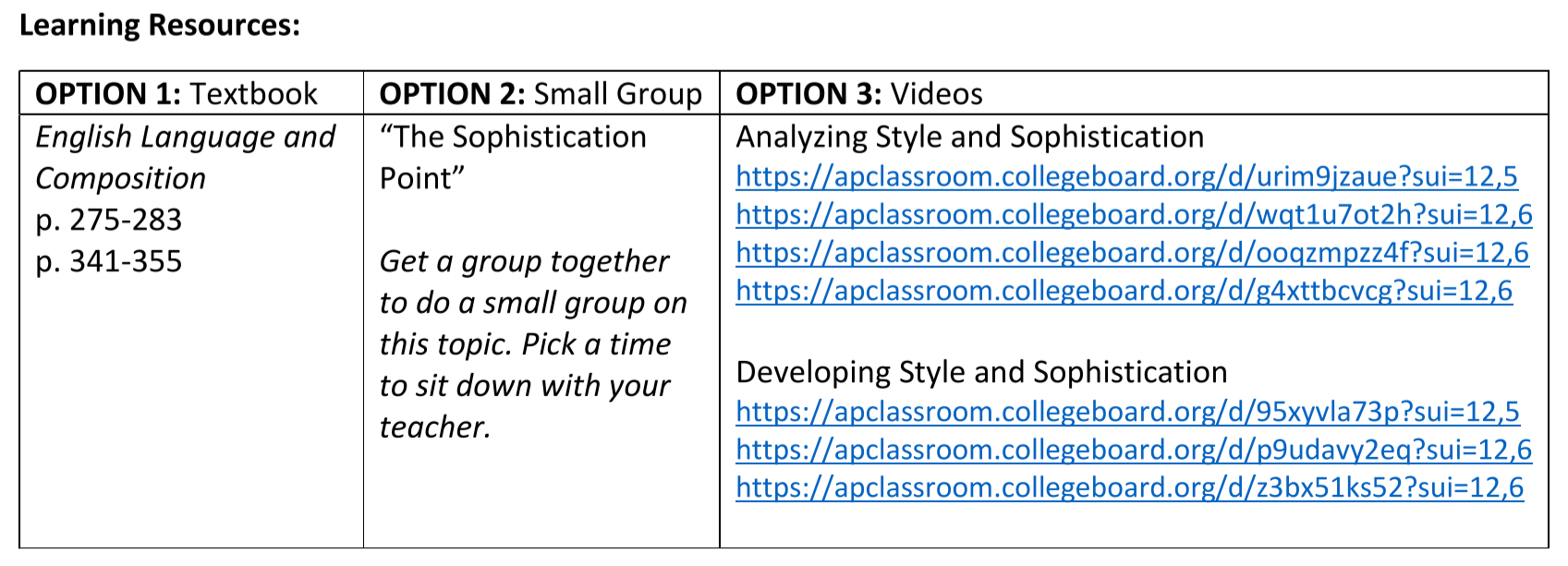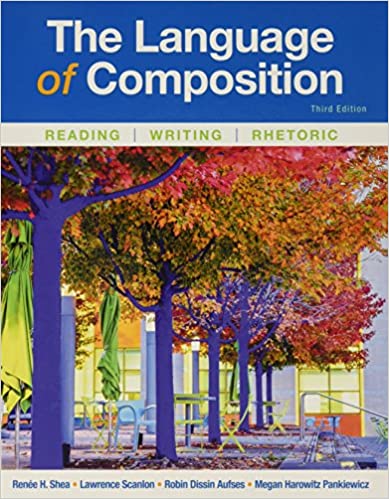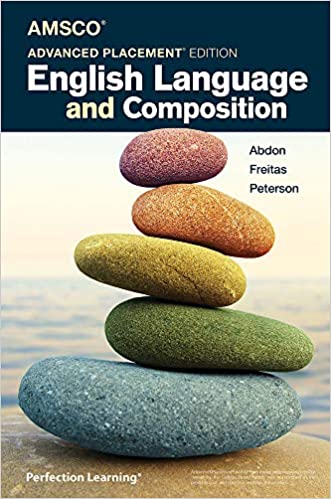|
Today, I am here to talk about the scariest part of personalizing learning - allowing kids to create their own assessments. I say "scariest" because to give up control of how students how mastery is REALLY hard. For a long time, I told myself I was the best person to assess their work because I knew every facet of the test and standards, but let's face it: They're the expert on themselves. Not me. I had to let go of that little ego trip. Now, I anticipate the argument that - as the teacher - you have the training and content knowledge to support the kids. That's fair. However, that same training and content knowledge can be used to guide them to the desired outcome. Guiding them to their own discovery is always going to produce more meaningful results. Period. But it is scary. Terrifying, in fact, for a Type A person like myself. Before I jump into how I do this, I want to clearly something. In my previous series posts, I have talked about the many reinventions of personalization in my classroom. From ugly to bad to alright. It wasn't until my most recent iteration that I was courageous enough to attempt student designed assessment (and, as I mentioned in my last post, I am still assessing them on my terms in the "I Check"). As I've said. Personalization is a spectrum and a process. Start small (choice boards, options, reflection) and then jump into the really scary stuff. So, if you're ready, let's jump in... Personalizing AssessmentFor starters, simpler is better. The first step needs to be prioritizing standards. I have talked about this previously when writing about standards based grading, but I cannot express how essential it is for student designed assessment. I say this because... I did it wrong. (#oops). As I mentioned in my primary post about personalization, I paired standards so that students needed to analyze and develop. In my head, they would use this as a way to analyze a mentor text and then compose their own. In reality, they ended up just creating two products for each unit. In hindsight, I'd narrow to one standard. Lesson leared. So Step 1: Prioritize Standards and Content. The next step is to facilitate the design process. I created a template for students which they fill in and submit for approval. I check them off - either approving the initial submission or adding feedback. As we've navigated this process, I feel that it is 100% more successful if I just sit and talk with the kids. Therefore, I plan to use an "elevator pitch" in the future where students give me a short proposal for their assessment and we have a discussion after. Without this discussion, I felt they were just choosing the first assessment that came to mind whereas when I talked with them, we were much more intentional about choosing something that interested them. More fodder for the next go-around. Step 3 is to consider assessment. This is something I have a lot of room to grow with. As you'll notice, the template has a place for students to create a rubric of their own - which was great in theory, but failed in practice. They needed more examples of proficiency levels to really do this step. Let's be honest: They needed a lot more everything to successful with this step. Having dropped the ball in a very obvious way, I am brainstorming ideas for the next iteration. Here are some ideas bubbling around in my crazy mind:
I am excited about tackling this on the next time around. For now, we live with what we got. Ha ha.
1 Comment
I am creating this post purely to avoid scoring my AP Literature mock exams. (I'm sure you can relate). I don't know what it is about AP Literature versus AP Language, but I struggle so much more trying to wrap my head around the content. The abstraction of literature is something that has never truly enticed me, so navigating that prep is a challenge to say the least. (More on that eventually...) For today's part of the series, I wanted to talk about the concept of the "I Check." In my past post, I talked about the "I Learn" which is the first stage in the personalized process. In that stage, students explore the content and provide evidence of their learning.
|
| Prompt: | Student Handout: |
Mastery
If that makes sense...
Feedback
One of the biggest fears people have with personalizing learning is that students are going to be handing things in at all different times. While on the surface, this might seem frustrating or hard to organize, I feel it makes my feedback better. I score without the fatigue of reading 50 of a single assignment. Instead, I look at a variety of things all the time.
Also, and this is HUGE, I grade RIGHT. IN. CLASS. That means, I try to avoid grading outside of class. Why? Because if the student is in the room when I am scoring I can either A) score with them sitting beside me or B) pose questions to clarify meaning and help them correct.
I promise you. Personalizing - though admittedly a lot of work upfront - is a dream once you get going. These conversations about feedback (instead of notes on a paper) have been so much more impactful in getting students moving in the right direction.
In fact... My goal next year is to grade EVERYthing in class, all the time. If it's worth doing, it's worth taking the time to sit with the kids and score. Fortunately, using a personalized flexible format, gives me the time to make that happen!
Upcoming Posts
- Guiding Students Through Performance Task Design ("I Show")
- Teaching Reflection (...if I even figure it out).
(And if you are wondering, I did finish those mock exams... Until I got the makeup ones today).
What I call the "I Learn" phase is my best effort to achieve that self-directed learning experience. It is also... the most daunting part of the entire process, in my humble opinion.
I'll explain by showing an example of how students might learn a standard, such as Style and Sophistication in my class at the moment.
Learning Options: Style & Sophistication
When they open their unit template, their learning options are laid out...
A) Read and take notes from a textbook.
B) Participate in a small group.
C) Watch videos.
Each of these are like designing a lesson on its own, so as you might imagine, creating options takes a lot of time and a lot of materials. This is what makes this - for me - the most daunting. That said, it helps that there are so many great resources out in the world. Here are the materials we are using for this unit.
Style & Sophistication Resources
A) TEXTBOOKS
I have two go-to textbooks which I have class sets of. For different units, I refer students to different books - depending on what is provided in each. I would highly recommend these two texts as a reference for students in their learning:
| The Language of Composition, if you don't know, is kind of the standard for AP Language. It is the most often used text, from what I have seen. The initial part of the book offers a host of fundamental information about writing and rhetoric. From there, it breaks into thematic units with provided texts and activities. How I Use It:
| This is a newer text by veteran AP Language teachers Lauren Peterson and Timm Freitas, as well as Brandon Abdon. My affection for this text lies in how everything is directly aligned to standards. I can easily pull passages for kids to fit various skills. Also, this text provides a great number of practice assignments! How I Use It:
|
B) SMALL GROUP
This is as simple as students sitting down to talk about the content with me. Starting this portion of the year - where students are exploring 6 different units - my colleague and I created short PowerPoints that we could use to guide these discussions.
Here is our Style & Sophistication one...
C) VIDEOS
Now, I don't wanna brag, but I have some good video content on my YouTube channel. That said, I don't have nearly enough to cover an entire year of AP Language. Fortunately for me, College Board started the incredible task of creating videos (and MULTIPLE videos) for every skill. #blessed
Because we used my videos for the first part of the year, now I am directing them to the College Board videos. My expectation is that students take notes during videos so they have something to prove they put in the time.
Here are a few of my more popular videos:
| | | |
D) ACTIVITIES
Ok... So I didn't mention that there was an option D before. That's because I haven't implemented it yet! As I've mentioned, this is a process that I've been adapting and changing each time. In the next manifestation, I am focused on providing activities (worksheets, graphic organizers, projects) that students can also learn through.
The good news is that after teaching the course for 6 years, I have tons of these activities already to go. I just need to search the catacombs of my many, many folders to find all the gems.
Evidence of Learning
Most of the time, these are notes they took from reading or watching videos, but it might also be summaries, annotations, marked up PowerPoints, etc. Using Schoology, I set these up so they MUST submit their evidence before they can move on.
Personalizing the learning process is scary - even after seeing it be successful. As teachers, we away want to be in control of the information they are getting. That's why we preview videos before we assign them or make our own version of other people's PowerPoints. This need to construct the narrative is well-intentioned but exhausting. As someone who used to obsess about recreating everything myself - it was a big leap to point students in a direction and hope they land on the right information.
That said, the same is accomplished with the next step for students, the "I Check." At that point, I can redirect or provide feedback to clarify what I want. For me, the surprise was that I rarely had to do this. If kids watched videos or read, they seemed to catch on just the same to what I covered in small groups. In other words, I didn't need to dress anything up for them; they got it on their own!
Even so... the "I Check" is hugely important. Stay tuned for my post on designing these assessments and for sample material!
Archives
February 2024
January 2024
October 2023
July 2023
June 2023
February 2023
January 2023
December 2022
July 2022
June 2022
May 2022
February 2022
January 2022
December 2021
November 2021
October 2021
September 2021
August 2021
July 2021
June 2021
April 2021
March 2021
February 2021
January 2021
November 2020
October 2020
September 2020
August 2020
July 2020
June 2020
April 2020
March 2020
February 2020
January 2020
November 2019
August 2019
April 2019
March 2019
February 2019
January 2019
December 2018
November 2018
October 2018
September 2018
August 2018
July 2018
June 2018
May 2018
March 2018
Author
Steph Cwikla has been a teacher since 2012, focusing on ELA curriculum. Now, she also works as an instructional coach, helping other teachers improve engagement and instruction.




 RSS Feed
RSS Feed